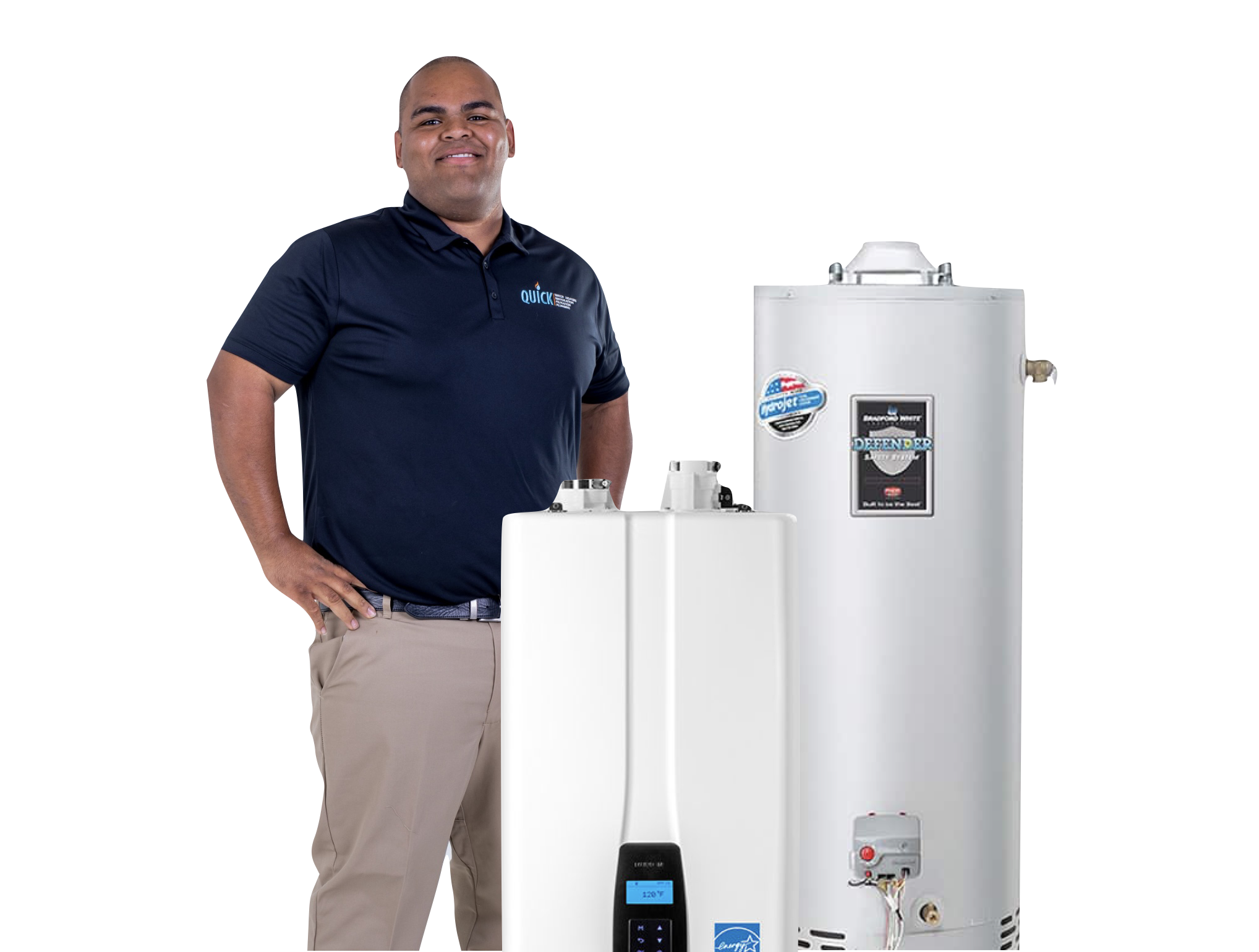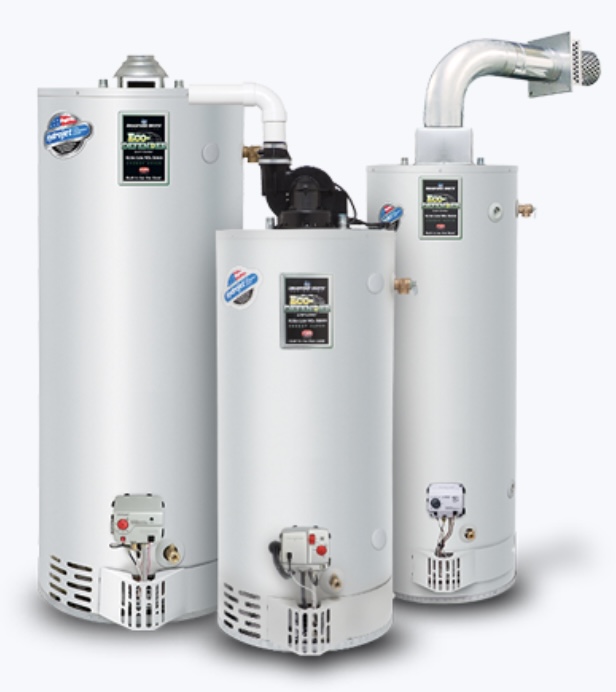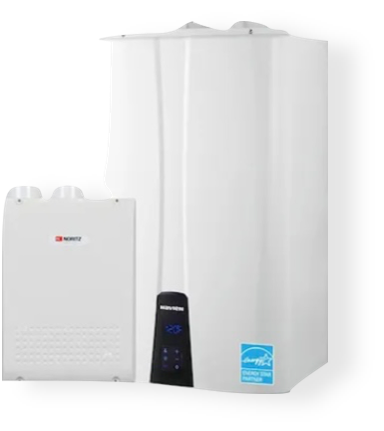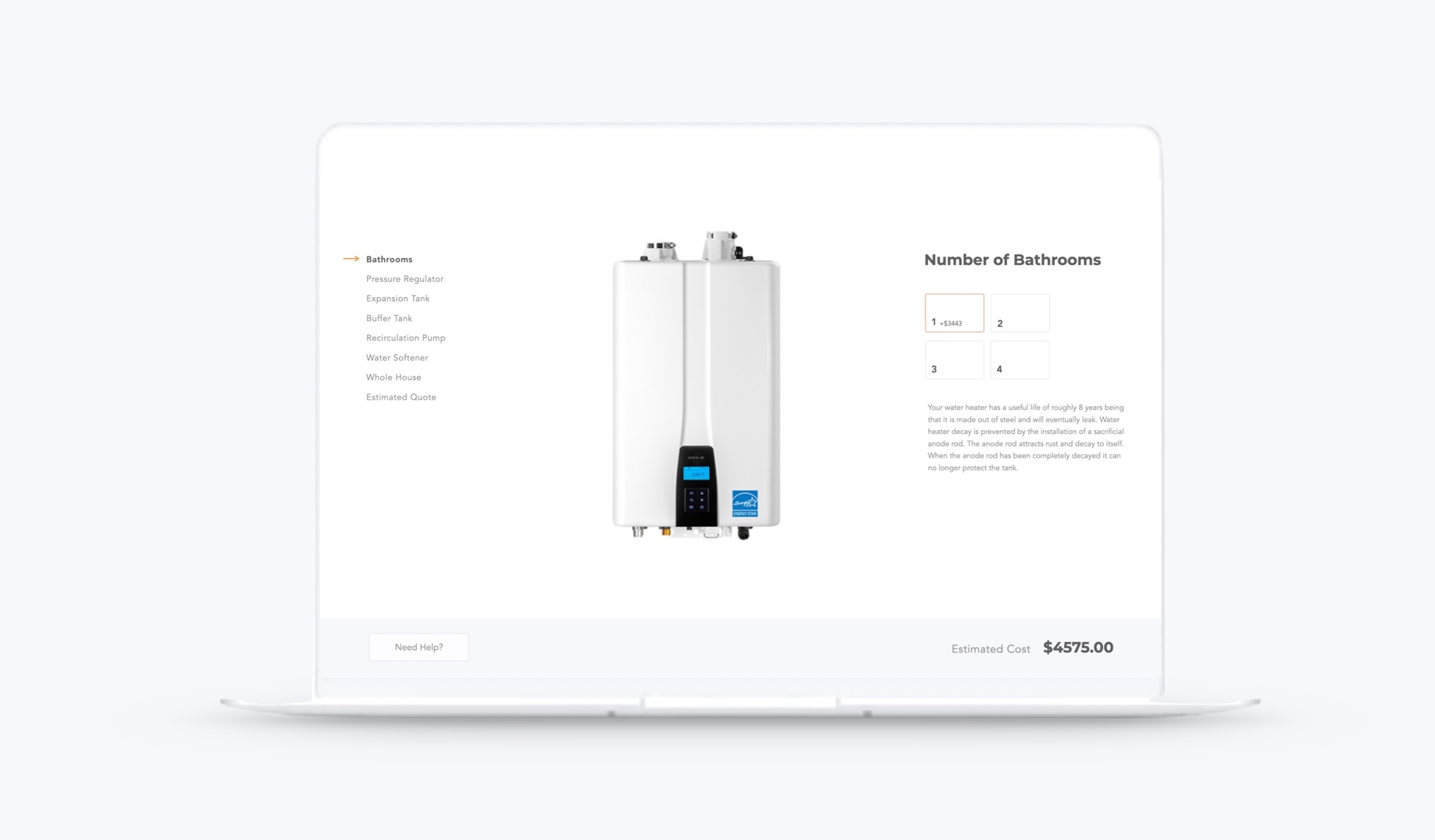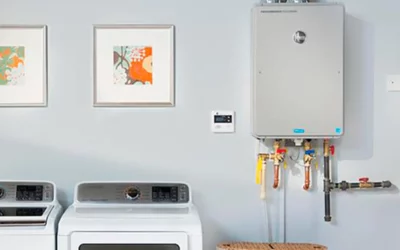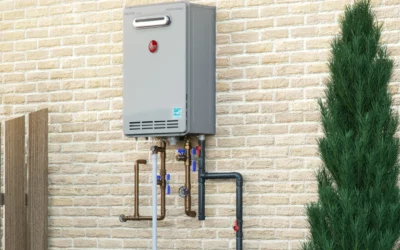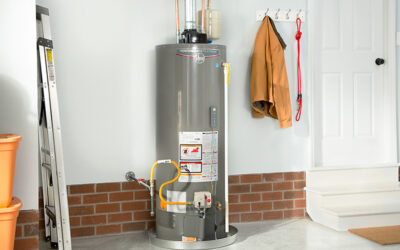Hot water heaters are an essential appliance in every household, providing hot water for various purposes. However, like any other appliance, they can encounter issues over time. In this comprehensive guide, we will walk you through the process of repairing a hot water heater, from understanding the basics to step-by-step instructions for identifying and fixing common problems. We will also provide tips for maintaining your hot water heater to ensure its longevity and efficiency. Additionally, we will discuss when it is necessary to call a professional for hot water heater repair and answer frequently asked questions regarding heating elements, leaks, and hot water production. By following this guide, you will be equipped with the knowledge and tools needed to effectively repair and maintain your hot water heater.
Understanding the Basics of Hot Water Heater Repair
Understanding the Basics of Hot Water Heater Repair involves gaining knowledge about the functioning and components of a hot water heater, common issues that can occur, and the tools and equipment required for repairs.
What is a Hot Water Heater?
A hot water heater is a device used to heat and store water for domestic use, typically found in homes and commercial buildings.
Common Issues with Hot Water Heaters
When it comes to hot water heaters, there are several common issues that homeowners may encounter. One common problem is a lack of hot water, which can be caused by a malfunctioning heating element, a faulty thermostat, or a buildup of sediment in the tank. Another issue is a leaking water heater, which can be caused by a damaged or corroded tank, a faulty pressure relief valve, or loose connections. Additionally, hot water heaters may experience issues with water temperature, such as inconsistent temperatures or water that is too hot or too cold. These common issues with hot water heaters can often be addressed through proper maintenance and repair techniques.
Tools and Equipment Needed for Hot Water Heater Repair
When it comes to repairing a hot water heater, having the right tools and equipment is essential. Here is a list of items you will need for the repair process:
- Adjustable wrench
- Screwdrivers (both Phillips and flathead)
- Plumber’s tape
- Multimeter
- Wire cutters
- Wire connectors
- Teflon tape
- Pipe wrench
- Tankless water heater flush kit (if applicable)
- Anode rod
- Replacement heating element
- Replacement thermostat
- Bucket or drain pan
- Gloves and safety goggles
Having these tools and equipment readily available will make the hot water heater repair process more efficient and ensure that you have everything you need to fix any common issues that may arise.
Step-by-Step Guide to Repairing a Hot Water Heater
A step-by-step guide is provided to assist with repairing a hot water heater, ensuring that individuals have the necessary information and instructions to successfully fix any issues that may arise.
1. Identify the Problem
Identifying the problem is the first step in repairing a hot water heater. This involves carefully inspecting the unit to determine what is causing the issue. Common problems that may be identified include leaks, no hot water, strange noises, or a faulty pilot light. By identifying the problem accurately, you can then proceed with the appropriate repairs or replacements to restore the functionality of the hot water heater.
2. Turn Off the Power Supply
To turn off the power supply to your hot water heater, follow these steps:
- Locate the circuit breaker panel in your home.
- Look for the breaker labeled “water heater” or something similar.
- Switch off the corresponding breaker to cut off power to the hot water heater.
- Double-check that the power is indeed turned off by testing the heater’s controls or using a voltage tester.
- Remember to exercise caution when dealing with electricity and always prioritize your safety.
By turning off the power supply, you can safely proceed with the repair or maintenance tasks for your hot water heater.
3. Drain the Water Heater
Draining the water heater is an essential step in the hot water heater repair process. To drain the water heater, follow these steps:
- 1. Locate the drain valve at the bottom of the water heater.
- 2. Attach a garden hose to the drain valve and place the other end in a suitable drainage area.
- 3. Turn off the power supply to the water heater.
- 4. Open the drain valve by turning it counterclockwise.
- 5. Allow the water to completely drain from the tank.
- 6. Once the tank is empty, close the drain valve by turning it clockwise.
Draining the water heater helps remove sediment and mineral buildup that can affect its performance. It is recommended to drain the water heater annually or as needed to maintain optimal functioning.
4. Replace Faulty Components
When repairing a hot water heater, one crucial step is to replace any faulty components. Faulty components can cause issues such as leaks, inadequate heating, or no hot water at all. To replace these components, you will need the necessary tools and equipment, which should have been outlined in a previous section. It is important to follow specific instructions provided by the manufacturer or a reliable repair guide to ensure proper replacement. By replacing faulty components, you can restore the functionality of your hot water heater and ensure consistent hot water supply.
5. Test and Restore Power
After replacing faulty components in your hot water heater, the next step is to test and restore power. This is a crucial step to ensure that your hot water heater is functioning properly. To test the power supply, turn it back on and check if the heater is receiving electricity. You can do this by flipping the circuit breaker back on or reconnecting the power source. Once the power is restored, give the hot water heater some time to heat up the water. Test the hot water faucet to see if it is producing hot water. If everything is working as expected, you have successfully repaired your hot water heater.
Tips for Maintaining a Hot Water Heater
Tips for maintaining a hot water heater include regularly inspecting and cleaning the tank, flushing the tank annually, and adjusting the temperature settings.
Regularly Inspect and Clean the Tank
Regularly inspecting and cleaning the tank of your hot water heater is crucial for maintaining its efficiency and longevity. Over time, sediment and mineral deposits can accumulate at the bottom of the tank, reducing its heating capacity and potentially causing damage to the heating elements. To inspect and clean the tank, start by turning off the power supply and allowing the water to cool down. Then, carefully remove the access panel and visually inspect the interior of the tank for any signs of sediment buildup or corrosion. If necessary, use a soft brush or cloth to gently clean the tank, being cautious not to damage any components. Once the tank is clean, replace the access panel and restore power to the water heater. By regularly inspecting and cleaning the tank, you can ensure that your hot water heater operates efficiently and prevent any potential issues from arising.
Flush the Tank Annually
Flushing the tank annually is an important maintenance task for your hot water heater. Over time, sediment and mineral deposits can accumulate at the bottom of the tank, which can affect the efficiency and performance of the heater. By flushing the tank, you can remove these deposits and ensure that your hot water heater continues to function properly. To flush the tank, you will need to turn off the power supply, shut off the water inlet valve, attach a hose to the drain valve, and drain the tank completely. Once the tank is empty, you can open the water inlet valve to allow fresh water to flow through the tank and flush out any remaining sediment. Flushing the tank annually can help extend the lifespan of your hot water heater and prevent issues such as reduced hot water output or premature failure.
Adjust the Temperature Settings
Adjusting the temperature settings of your hot water heater is an important aspect of maintenance. It allows you to control the temperature of the water and ensure it is at a comfortable and safe level. To adjust the temperature settings, start by locating the thermostat on your water heater. It is usually located on the front or side of the tank. Use a flathead screwdriver or a similar tool to turn the thermostat dial to your desired temperature. It is recommended to set the temperature between 120 and 140 degrees Fahrenheit to prevent scalding while still providing hot water. Once you have adjusted the temperature, wait for a few hours to allow the water to reach the new temperature. Remember to periodically check and adjust the temperature settings as needed to maintain optimal performance of your hot water heater.
When to Call a Professional for Hot Water Heater Repair
Knowing when to call a professional for hot water heater repair is crucial to ensure the problem is addressed correctly and efficiently. At Quick Water Heater, we understand the complexities involved in repairing hot water heaters, and we are here to help. Whether you are experiencing persistent issues, lack the necessary tools or expertise, or simply want to avoid any DIY mishaps, our team of skilled technicians is ready to provide reliable and professional assistance. With our transparent pricing and commitment to delivering the highest quality of service, you can trust us to handle all your hot water heater repair needs.
Signs that You Need Professional Help
There are several signs that indicate when you need professional help with your hot water heater. One common sign is a complete lack of hot water. If your water heater is not producing any hot water, it could be due to a faulty heating element or a more serious issue with the thermostat or electrical system. Another sign is a significant decrease in hot water supply. If you notice that your hot water runs out quickly or is not as hot as it used to be, there may be a problem with the heating elements or the tank itself. Additionally, any signs of leakage or water pooling around the water heater should not be ignored and should prompt you to seek professional assistance. It is important to address these signs promptly to ensure the proper functioning and safety of your hot water heater.
Choosing a Reliable Hot Water Heater Repair Service
When it comes to choosing a reliable hot water heater repair service, there are a few key factors to consider. First and foremost, it’s important to look for a service provider that has experience and expertise in hot water heater repair. This ensures that they have the necessary knowledge and skills to effectively diagnose and fix any issues with your hot water heater. Additionally, it’s important to choose a service that is licensed and insured. This provides peace of mind knowing that you are working with a reputable and professional company. Another important aspect to consider is the availability and responsiveness of the repair service. Emergencies can happen at any time, so it’s crucial to choose a service that offers 24/7 availability and quick response times. Lastly, it’s a good idea to read customer reviews and testimonials to get an idea of the service provider’s reputation and customer satisfaction. By considering these factors, you can ensure that you choose a reliable hot water heater repair service that will effectively address any issues with your system.
FAQ
Answers to frequently asked questions about hot water heater repair, including when to replace heating elements, whether you can repair a leaking water heater yourself, reasons for a lack of hot water, typical repair time, and the importance of regular water heater drainage.
1. How often should I replace the heating elements in my water heater?
The frequency at which you should replace the heating elements in your water heater depends on various factors such as usage, water quality, and maintenance, but generally, it is recommended to replace them every 3-5 years.
2. Can I repair a leaking water heater myself?
Repairing a leaking water heater yourself is possible, but it is recommended to have professional help due to the complexity and potential safety risks involved.
3. Why is my hot water heater not producing hot water?
There can be several reasons why a hot water heater is not producing hot water, such as a faulty heating element, a broken thermostat, or a gas supply issue.
4. How long does it take to repair a hot water heater?
Repairing a hot water heater can vary in time depending on the specific issue, but it generally takes a few hours to a full day to complete the repair process.
5. Is it necessary to drain the water heater regularly?
Regularly draining the water heater is necessary to remove sediment buildup and improve its efficiency.


